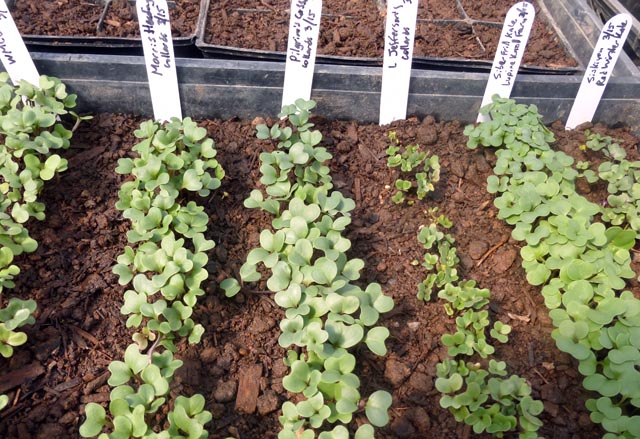
F is for February and flats. In early February, be sure you have all your seeds ordered and ready to start.  Indoors, start some lettuce, parsley, early brassicas, and the remainder of your bulb onions from seed in flats.  Hot peppers, like Habanero, should be started early in the month because they are very slow to grow early on. A little bottom heat will speed up germination.

In mid-February, start your sweet peppers and eggplants. Then start another succession of broccoli, cauliflower, cabbage, celery, Chinese greens, and lettuce in flats. By the end of the month, you can start your first tomato seedlings. You may want to start a cold-tolerant Russian variety of early tomato, such as Zarnista, for extra early harvest, and Eva Purple Ball or Mule Team for heavy main season production of top notch fruits. Old Virginia is also an exceptional slicing tomato to try.
For quicker germination with your early sowings directly in the garden, try pre-sprouting your radish, spinach, pea, carrot, and beet seeds on paper towels in an incubator for more successful stands. These can be planted every two weeks. Plant them out under a floating row cover (e.g., Reemay®) as soon as they send out their first little roots. Incubators or heating mats speed up germination and get your early seedling flats off to a flying start. Late February sowings outside are most successful in a cold frame under a garden blanket. This is an excellent season to start some Forellenschluss Romaine Lettuce, a beautiful variety loved by many for it’s cold hardiness and crunchy bright green leaves covered with deep red markings.  Globe Artichokes that see temperatures between 35-42°F when young will often produce in early summer the same year.

For those of you new to growing from seed, our neighbor Pam Dawling (author of Sustainable Market Farming) offered this great blog post on Starting Seedlings to get you started right.
Time to get out your seeds, fill up your flats, and start planting!






